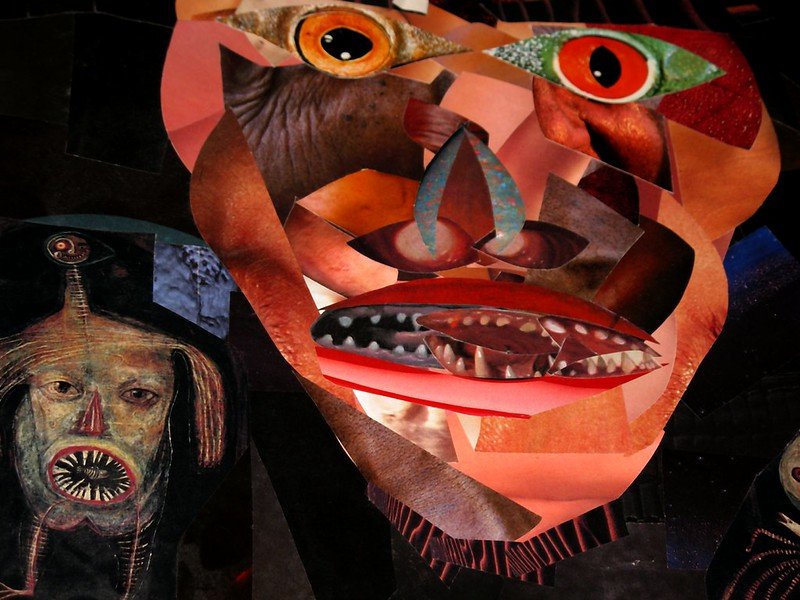The art world is witnessing a dynamic shift as contemporary portrait artists redefine visual storytelling through innovative techniques and bold experimentation. Among the most influential figures shaping this movement are surrealist painters, whose dreamlike imagery and unconventional approaches continue to inspire today’s creative landscape.
Understanding the connection between these two artistic forces reveals how modern and contemporary art are evolving to captivate collectors, galleries, and digital audiences worldwide.
What Makes Contemporary Portrait Artists Unique in Art World
Contemporary portrait artists are transforming traditional portraiture by blending classical techniques with modern sensibilities. Unlike conventional portrait work, today’s artists incorporate mixed media, digital elements, and conceptual frameworks that challenge viewers’ perceptions.
Contemporary portrait artists often draw inspiration from surrealist painters, adopting their ability to distort reality and create emotionally charged compositions.
The uniqueness of contemporary portrait artists lies in their versatility. They work across multiple platforms—from canvas and photography to digital installations and ceramic sculptures.
This adaptability makes their work accessible to diverse audiences while maintaining artistic integrity. Contemporary portrait artists understand that modern collectors seek pieces that provoke thought and conversation, not merely decorative wall hangings.
Market data shows that contemporary portrait artists are commanding significant attention at auctions and online galleries. Their ability to merge personal narratives with universal themes creates artwork that resonates across cultural boundaries. This global appeal positions contemporary portrait artists as essential players in the current art economy.
The Influence of Surrealist Painters on Modern Artistic Expression
Surrealist painters emerged in the early 20th century, revolutionizing how artists approached creativity and imagination. Masters like Salvador Dalí and René Magritte taught the world that art could transcend reality, exploring subconscious desires and fantastical landscapes. Today, surrealist painters continue to influence emerging artists who seek to break free from representational constraints.
The techniques pioneered by surrealist painters—juxtaposition, symbolism, and dreamlike imagery—remain relevant in contemporary art practices. Modern creators study surrealist painters to understand how distortion and unexpected combinations can create powerful visual narratives. The psychological depth that surrealist painters brought to their work established a foundation for conceptual art movements that followed.
Contemporary audiences appreciate surrealist painters for their fearless exploration of the human psyche. Their willingness to challenge social norms and artistic conventions paved the way for today’s experimental artists. Galleries worldwide continue to showcase surrealist painters, demonstrating their enduring impact on visual culture.
Connecting Surrealist Painters to Contemporary Portrait Artists Through Playful Expression
The bridge between surrealist painters and contemporary portrait artists becomes evident when examining their shared commitment to imagination and innovation. Both groups reject rigid artistic rules, preferring to explore unconventional materials and unexpected compositions. Contemporary portrait artists often incorporate surrealist elements—distorted features, impossible scenarios, and symbolic objects—into their portraiture work.
This connection extends beyond visual similarities. Like surrealist painters, contemporary portrait artists use their work to comment on society, identity, and human experience. They employ humor, irony, and absurdity to engage viewers, making art accessible while maintaining intellectual depth. The playful approach that defined surrealist painters now manifests in contemporary portrait artists who work with ceramics, sculpture, and mixed media installations.
Contemporary portrait artists have also adopted the surrealist painters’ strategy of creating recognizable yet uncanny images. By presenting familiar subjects—human faces, everyday objects—in unexpected contexts, these artists generate the same sense of wonder that surrealist painters achieved decades ago. This artistic lineage demonstrates how influential movements continue shaping contemporary practices.
Why Collectors and Galleries Are Investing in Contemporary Portrait Artists
The investment potential of contemporary portrait artists has attracted serious attention from collectors, auction houses, and online platforms. Several factors drive this trend: authenticity, innovation, and cultural relevance.
Contemporary portrait artists create original work that reflects current social issues, making their pieces historically significant for future generations.
Galleries recognize that contemporary portrait artists appeal to younger collectors who value narrative-driven art. These buyers seek pieces that tell stories and reflect personal identity—exactly what contemporary portrait artists deliver. The influence of surrealist painters on this demographic cannot be understated; their legacy taught collectors that art should challenge, surprise, and transform perspectives.
Online art platforms have democratized access to contemporary portrait artists, allowing global audiences to discover and purchase their work. Digital exhibitions featuring contemporary portrait artists generate impressive engagement metrics, proving that this category resonates with modern consumers.
Investment advisors increasingly recommend contemporary portrait artists as portfolio diversification options, particularly those whose work demonstrates clear connections to established movements like surrealism.
The Lasting Impact of Surrealist Painters and Contemporary Portrait Artists
The relationship between surrealist painters and contemporary portrait artists illustrates how artistic innovation builds upon historical foundations. Surrealist painters created a visual language that continues inspiring today’s creators, while contemporary portrait artists expand that vocabulary through new technologies and materials. Together, these artistic forces shape how we understand identity, reality, and creative expression.
For collectors seeking meaningful investments, contemporary portrait artists represent an opportunity to acquire culturally significant work at accessible price points. The techniques pioneered by surrealist painters ensure that conceptual, imaginative art maintains lasting value.
As the art market evolves, the symbiotic relationship between surrealist painters and contemporary portrait artists will continue defining aesthetic trends and investment opportunities for years to come.
Photo Credit: “‘Man Mask'” by Dru!.







